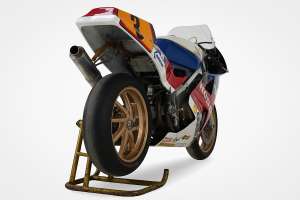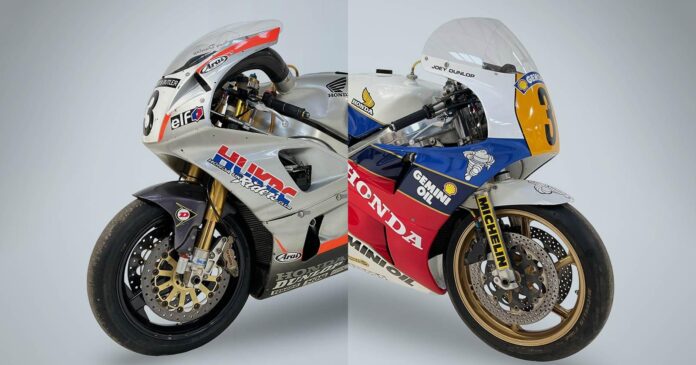Joey Dunlop’s race-winning Honda VFR750R RC30 and Honda RVF750 RC45 sell for a pretty penny at the Bonham’s Autumn Stafford Sale.
Held seasonally at the Staffordshire County Showground in Stafford, England, the Bonhams Stafford sale consistently delivers a slew of interesting and valuable motorcycles and automobiles. Some of them are noteworthy simply for their age and rarity, but others stand out for their historic significance—like this pair of ex-Joey Dunlop Honda race bikes.
With a sell-through rate of 98% across 207 lots, this year’s Bonhams Autumn Stafford auction raked in a grand total of £2,637,585. While the biggest hitter was a 1929 Brough Superior that sold for £184,000, these two Hondas landed at third and fifth, netting a remarkable £224,250 [around $298,718] between them.
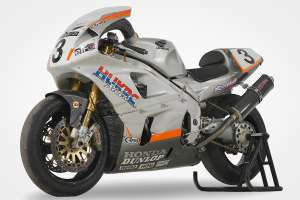
Joey Dunlop’s name alone is enough to add value to a vintage motorcycle. With 26 Isle of Man TT wins dating back to 1977, three TT hat tricks, and 24 Ulster Grand Prix victories to his name, the Irish racer remains a true legend of the sport. But these two Hondas weren’t just ridden by Dunlop—they’re both bona fide race-winning machines.
The silver bike [above] is the Honda RVF750 RC45 that Dunlop won his 24th Ulster Grand Prix aboard in 1999, less than a year before his passing. The HRC-liveried Honda VFR750R RC30 [below] has an even more impressive pedigree—it’s the bike that Dunlop won the 1988 Isle of Man TT Formula 1 race with, marking the RC30’s first win.
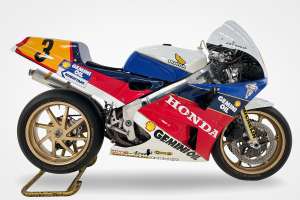
The 1988 Honda VFR750R RC30 fetched the bigger number at the Autumn Stafford Sale, selling for £132,250 [about $176,157]. But that’s hardly shocking—the VFR750R RC30 is widely considered one of the most iconic superbikes of the 80s.
Built by Honda as a race-homologation motorcycle for the fledgling World SBK Championship, the RC30 featured a liquid-cooled 748 cc DOHC 90° V-four engine, close-ratio six-speed gearbox, aluminum twin-spar frame, and single-sided swingarm. It was an immediate hit. Fred Merkel piloted it to two consecutive World SBK Championship titles, Carl Fogarty won a pair of TT Formula 1 World Championships with it, and it carried Joey Dunlop’s younger brother, Robert, to victory at the 1989 Macau Grand Prix.
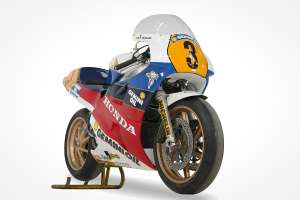
Joey Dunlop was already a seasoned TT superstar when he got his hands on this RC30. He reportedly had high praise for the bike, which he rode to victory in both the 1988 Formula 1 TT and Senior TT races—setting an outright TT lap record of 118.54 mph during the latter. Combined with his win in the Junior TT aboard a smaller Honda that year, these accounted for Dunlop’s second TT hat trick.
Beyond the TT, Dunlop fielded the RC30 in several rounds of the 1988 World SBK Championship alongside Merkel—including the inaugural round at Donington Park, where he placed third overall.
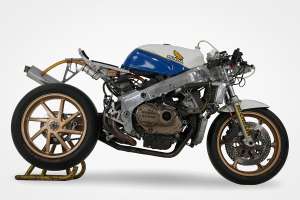
Sporting the same livery as the production bike, Dunlop’s VFR750R RC30 is recognizable by its sponsor logos, gold-colored magnesium Honda Racing wheels, and Dunlop’s race number. It also boasts a handful of special details that are harder to spot.
For starters, it has two frame numbers—one stamped directly onto the frame by the factory, and a second on a riveted plaque (presumably for carnet purposes when traveling internationally). It also has ‘T.SCOTT’ stamped on the full race-spec engine, indicating that it was put together by famed bike engine tuner and builder Tony Scott.
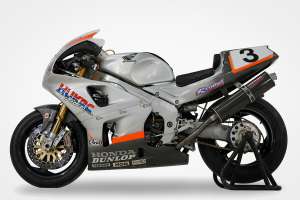
Joey Dunlop’s 1999 Honda RVF750 RC45 earned a hair less than his RC30 at the Stafford Sale, selling for £92,000 [about $122,582]. But it’s every bit as remarkable.
The RC45 came out in the mid-90s as a direct successor to the RC30—and although it wasn’t quite as dominant, it still had an impressive resume. Honda had taken the RC30 formula and tweaked it across the board, and the resulting bike was quick enough to nab two World SBK titles with John Kocinski and one second-place overall finish with Colin Edwards.
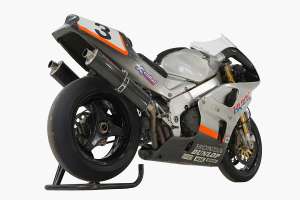
Joey Dunlop’s career had already reached mythical status when the RC45 hit the scene. He adapted to it quickly, with a win at the Ulster Grand Prix in 1994 and again at the TT in 1995. Dunlop and the RC45 are credited with a few more victories, but none quite as famous as their last Ulster outing together in 1999.
Dunlop, then 47, lined up alongside younger riders on newer machines to battle it out on the 7.4-mile Dundrod road racing circuit. After a shaky start, he fought his way to third place behind David Jefferies and Ian Duffus—both on more powerful factory-backed Yamaha R1s. Dunlop eventually split the pair before taking the lead and crossing the finish line in first place for the 24th time.
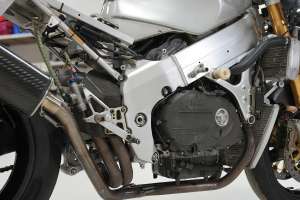
Dunlop raced the RC45 a few more times before he tragically lost his life in a 125 cc road race in Estonia. That makes this particular example one of the last motorcycles he ever raced, adding to its significance.
Like the RC30, this RC45 is a true survivor; an unrestored HRC special that still bears every nick and scratch that it earned. One of only three or four factory-prepped RC45 racer bikes ever made, the bike’s engine is also the last RC45 unit that the late Steve Mellor ever built. Its frame is unstamped—but, as with the other bike, there’s a carnet-friendly frame number etched onto a riveted plaque.
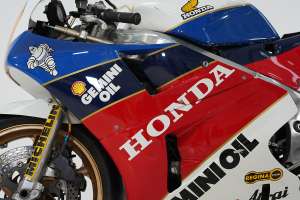
Both bikes were sold for the first time at the Bonhams Autumn Stafford Sale, after being on display at Joey Dunlop’s bar in Ballymoney, Northern Ireland; the RC30 in a glass case, and the RC45 suspended from the ceiling.
We don’t know who snagged Dunlop’s Hondas, but we sincerely hope it was one buyer. These two historic machines represent two chapters in one of motorcycling’s most incredible stories—it would be a shame to split them up.
Source: Bonhams Motorcycles
